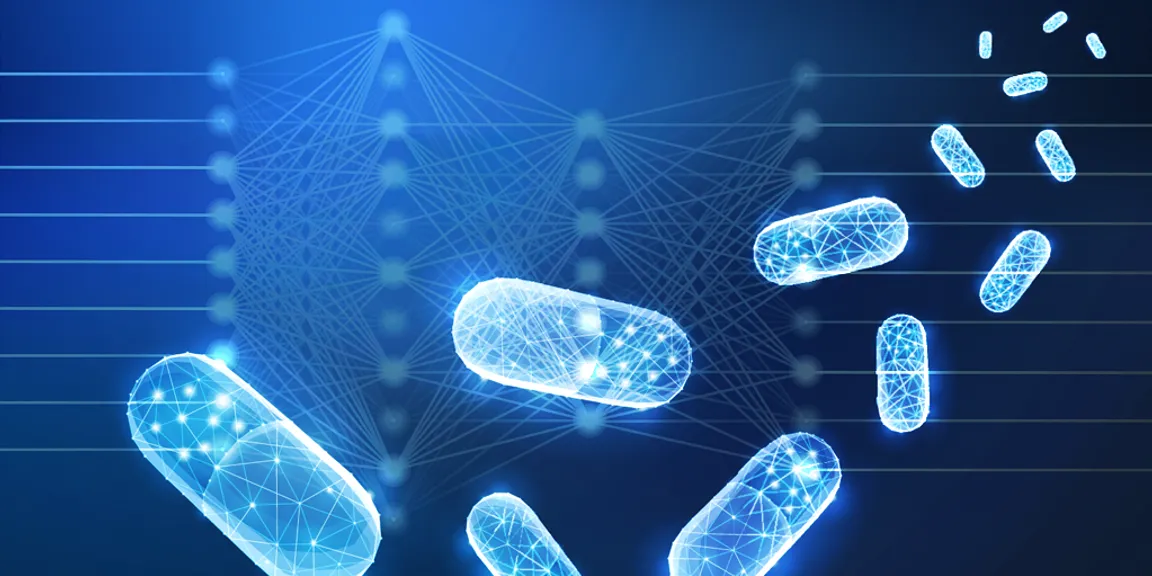

Machine Learning in Medicine: Powering Antibiotics with Algorithms
Machine learning is one of the most profound fields of technology in today’s world. Emerging as a niche from artificial intelligence has helped the people of the world do a great many things and solve a plethora of problems. Due to the benefits that technology has to offer, many industries are using machine learning which includes business, healthcare, education, among others.

Machine Learning in Today’s World
In today’s world, researchers and practitioners of machine learning are trying to use it for every industry out there. One of the most common reasons why it is being used across the world is due to its potential to see into the future. The ML Development Company helps people and organizations find relevant insights from the data that they have and look into the ways that it will be transformed in the time to come.
The manifestation of machine learning happens from the fact that we live in a world where the data is abundant. Data is one of the most prized possessions in today’s world and every organization out there is trying to make sense of the data because that is the key to going forward. Today businesses are no more guided by or compete in the market with exclusive pieces of technology. Instead, technology is available freely in the market and the way businesses distinguish themselves is due to the capabilities of the data.
Organizations and enterprises all over the world that harness the data using the freely available technology in the market and establish themselves as unique. This uniqueness is nothing but the characteristic insight of the data of their customers. Machine learning is one tool that helps organizations accomplish this with much ease without a lot of worries. Businesses use them to find insights like customer’s purchase patterns, the products they are likely to buy, the season in which they will buy, the amount of total purchase they will make along with many others.
Knowledge of these facts aids a business in making data-backed decisions and assert to the customer’s demands satisfactorily. Since the world around needs rapid advancements, at a much faster rate than the human brain can do them, machine learning kicks in handy and provides authentic solutions. But its potential is not just limited to the niche of business. For example, in the healthcare sector, there is a lot more impact that machine learning is creating.
One of the aims is to aid doctors to make the right and more precise decisions when we talk about a patient’s health. In yet another instance, they are helping in the early diagnosis of diseases such as breast cancer. The point is that today’s healthcare system is more focused on treating conditions and diseases rather than preventing them. We get to know if a person has breast cancer at a certain stage when mammography is done and then the treatment starts from there. However, with machine learning the question that is answered is, whether the person will develop breast cancer anytime soon.
A New Antibiotic
Similarly, plenty of machine learning algorithms are working in the field of medicine to help uncover new drugs. For a new drug to come up there are thousands of parameters that need to be taken care of. These may include the underlying nature of the disease, the microorganisms responsible for it, and the cells that it will target along with other factors. While it may take years for people to find the underlying causes of the disease, an algorithm can do it in the least amount of time and consider all those parameters that might be neglected when humans are pursuing research.
For the longest amount of time in the history of the healthcare system, finding novel antibiotics meant digging through the same stuff over and over again. Biologists across the world have spent hours finding soil-dwelling microbes for properties that kill the harmful bacteria. However, newer kinds of super-bugs resistant to these kinds of microbes keep on developing in the world, causing serious threats to mankind.
The way machine learning is looking at discovering new antibiotics is completely different. It is diving into those molecules that have so far been overlooked by medical experts and hospitals. Researchers from the Massachusetts Institute of Technology have used deep learning, a part of machine learning to predict antibiotics based on their structure. This study helps solve one important problem- target the antibiotic-resistant bacteria.
Researchers trained a deep neural network that was capable of predicting molecules with antibacterial activity. This was then used to do multiple predictions on different chemical libraries. It led to the discovery of a molecule from the drug repository hub, which is being called as hallicin. The innate properties of hallicin that make it suitable for the study of antibiotic research are that it is structurally divergent from traditional antibiotics and displays bacterial activity against a very wide phylogenetic spectrum of pathogens.
The drug was further tested on mice and was found capable of treating the gastrointestinal bug, Clostridium difficile that is one of the most prominent causes of infections in the blood, lungs, and urinary tracks and leaves patients hospitalized for days. The iterative process of retraining machine learning algorithm helped accomplish the search for an efficient drug.
Conclusion
The study is only one example of the areas of machine learning that one can explore. Machine Learning in healthcare would experience better quality care of the patient. We are heading towards a world of converging technologies that can drastically change the fate of humans and account for a more sustainable and preventive living. Not only will this improve the standard of living for the people of the world but also reduce the burden on the healthcare system.





